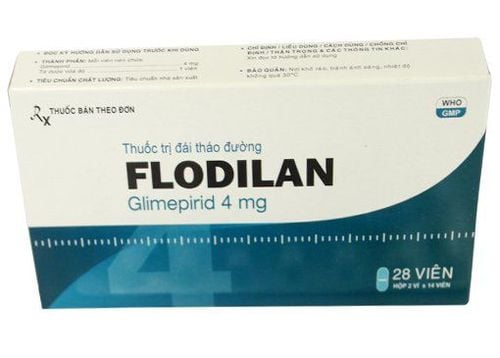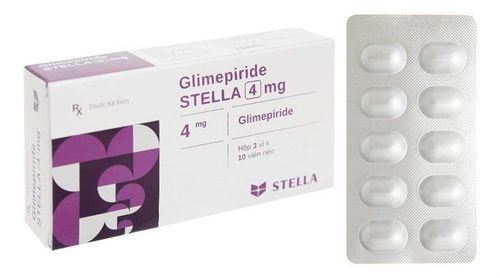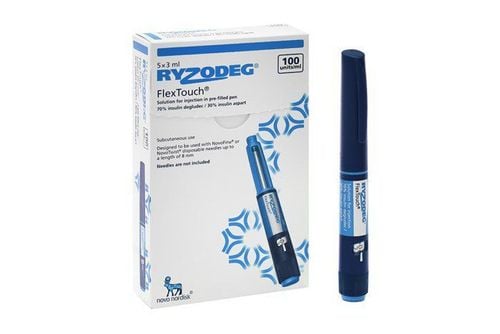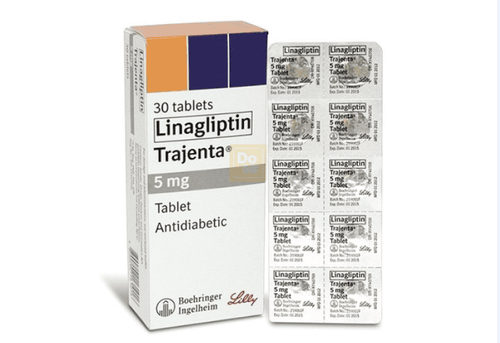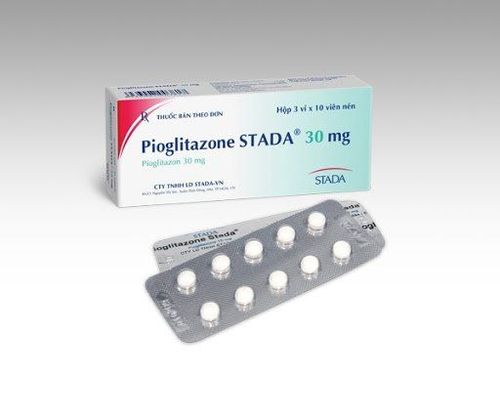This is an automatically translated article.
CoMiaryl is used in the treatment of type 2 diabetes in combination with diet and exercise. So what is the effect of CoMiaryl drug, how to use it, let's find out the use of CoMiaryl through the article below.
1. What is CoMiaryl?
Drug group: Hormones, Hormones
Dosage form: film-coated tablets
Packing: Box of 3 blisters x 10 long film-coated tablets
Manufacturer: Hasan - Dermapharm Co., Ltd.
Ingredients:
Glimepirid 2 mg, Metformin hydrochloride 500 mg. Excipients:
Lactose monohydrate, Avicel M101, Sodium starch glycolate, Crospovidon, Kollidon K30, Magnesium stearate, HPMC 615, HPMC 606, Talc, Titanium dioxyd, PEG 6000.
2. Uses of the drug Comiaryl
Indications
CoMiaryl is indicated for use in the treatment of type 2 diabetes in combination with diet and exercise:
In cases where glimepiride or metformin alone is not controlled. blood sugar. An alternative to the separate use of the individual components of glimepiride and metformin. How to use - Dosage
How to use:
CoMiaryl 2mg / 500mg should be taken once or twice daily, just before or during a meal. The tablet should be swallowed whole with a full glass of water.
Dosage:
Treatment should be started with the lowest effective dose and then adjusted according to the individual patient. The patient's blood glucose levels should be regularly monitored to adjust the dose accordingly.
The maximum daily dose should not exceed 2 CoMiaryl 2mg / 500mg tablets, twice daily.
If a patient already taking glimepiride and metformin as separate oral tablets is switched to CoMiaryl 2mg/500mg, the dose of CoMiaryl 2mg/500mg is based on the dose of glimepiride and metformin being used.
Note: The above dosage is for reference only. The specific dose depends on the condition and the progression of the disease. To get the right dose, you need to consult your doctor or healthcare professional.
Overdose, missed dose and management
Overdose:
After taking 85g of metformin, no hypoglycaemia although lactic acidosis occurred.
An overdose of glimepiride can lead to excessive, sometimes life-threatening, hypoglycemia.
In case of an emergency, immediately call 911 or go to the nearest local health station.
Missed dose:
If you forget to take a dose, continue taking CoMiaryl 2mg / 500mg with the next meal, do not take a double dose to make up for the missed dose.
3. Side effects when using Comiaryl
When using CoMiaryl, you may experience unwanted effects (ADRs).
Common, ADR > 1/100
Gastrointestinal: Gastrointestinal disturbances (nausea, vomiting, abdominal pain, diarrhea). These symptoms occurred at the start of treatment and then subsided spontaneously. Metabolic: Hypoglycemia. Eyes: Transient visual disturbance. Skin and subcutaneous tissue: Itching, rash. Rarely, 1/10,000 < ADR < 1/1000 Metabolism: Lactic acidosis due to metformin accumulation in patients with renal failure, liver failure, alcoholism and hypoxemia (high mortality). Very rare, ADR < 1/10,000 Blood and lymphatic system: Decreased red blood cells, white blood cells, platelets.
Instructions on how to handle ADR When experiencing side effects of the drug, it is necessary to stop using and notify the doctor or go to the nearest medical facility for timely treatment.
4. Notes when using the drug Comiaryl
Before using the drug you need to carefully read the instructions for use and refer to the information below.
Contraindications
CoMiaryl is contraindicated in the following cases:
Hypersensitivity to glimepiride, metformin or any of its ingredients. Type 1 diabetes, acute or chronic metabolic acidosis (decompensated ketosis), diabetic coma or pre-coma. Kidney failure, acute diseases that can cause kidney failure: dehydration (diarrhea, vomiting), fever, severe infections (such as respiratory infections, urinary tract infections, sepsis...). Liver failure, acute alcohol poisoning. Congestive heart failure, cardiovascular collapse, acute myocardial infarction. CoMiaryl 2mg/500mg should be temporarily discontinued in radiographers with iodinated contrast agents because of the potential for acute effects on renal function (48 hours before and after radiographs). Severe respiratory disease hypoxemia. Chronic hypoxic lung disease. Gangrene, alcoholism, malnutrition. Pregnant and lactating women. Use with caution
A strict diet should be followed. Check blood sugar and urine sugar regularly.
Patient may experience hypoglycemia. To avoid hypoglycemia, patients must strictly follow the doctor's instructions, have a balanced diet - regularly, exercise moderately, take medicine exactly as prescribed by the doctor. .
If vomiting, abdominal pain accompanied by cramps, malaise and severe fatigue occur, which may be a sign of serious loss of blood sugar control, the drug must be stopped and immediately reported to the treating doctor. .
Ability to drive and use machines
Due to the risk of hypoglycaemia and transient visual disturbances with CoMiaryl 2mg / 500mg use, caution should be exercised while driving or operating machinery.
Pregnancy
Contraindicated in pregnant women.
Lactation period
Contraindicated in lactating women.
5. Drug interactions
Glimepiride
Some drugs may increase the hypoglycemic effect of glimepiride such as: insulin, other oral antidiabetic agents, chloramphenicol, coumarin derivatives, cyclophosphamide, disopyramide, ifosfamide, MAOIs, non-steroid anti-inflammatory drugs , probenecid, antifungal agents (miconazole, fluconazole, ketoconazole), quinolones, sulfonamides, beta-blockers, ACE inhibitors, anabolic steroids and male sex hormones, alcohol, tetracyclines. Therefore, it is necessary to reduce the dose of glimepiride when combined with one of the above drugs. Some drugs can reduce the hypoglycemic effect of glimepiride such as: diuretics, especially thiazide diuretics, corticosteroids, diazoxid, catecholamines and other sympathomimetic drugs, glucagon, nicotinic acid. high doses), estrogen and estrogen-containing birth control pills, phenothiazines, phenytoin, thyroid hormone, rifampicin. In this case, an increase in the dose of glimepiride is required.
Metformin hydrochloride
Furosemide increases the maximum blood concentration of metformin without altering the renal clearance, thereby enhancing the glycemic control effect of metformin.
Cationic drugs that are eliminated via the renal tubule have the potential to interact with metformin by competing for the common tubular transport systems such as amiloride, digoxin, morphine, procainamide, quinidine, ranitidine, triamterene, trimethoprim, vancomycin. Cimetidine increases the peak blood concentration of metformin (60%). All of the above cases cause the accumulation of metformin leading to increased toxicity of this substance. Coordination should be avoided.
Storage
Store in a dry place, below 30°C. Avoid light.
Please dial HOTLINE for more information or register for an appointment HERE. Download MyVinmec app to make appointments faster and to manage your bookings easily.




